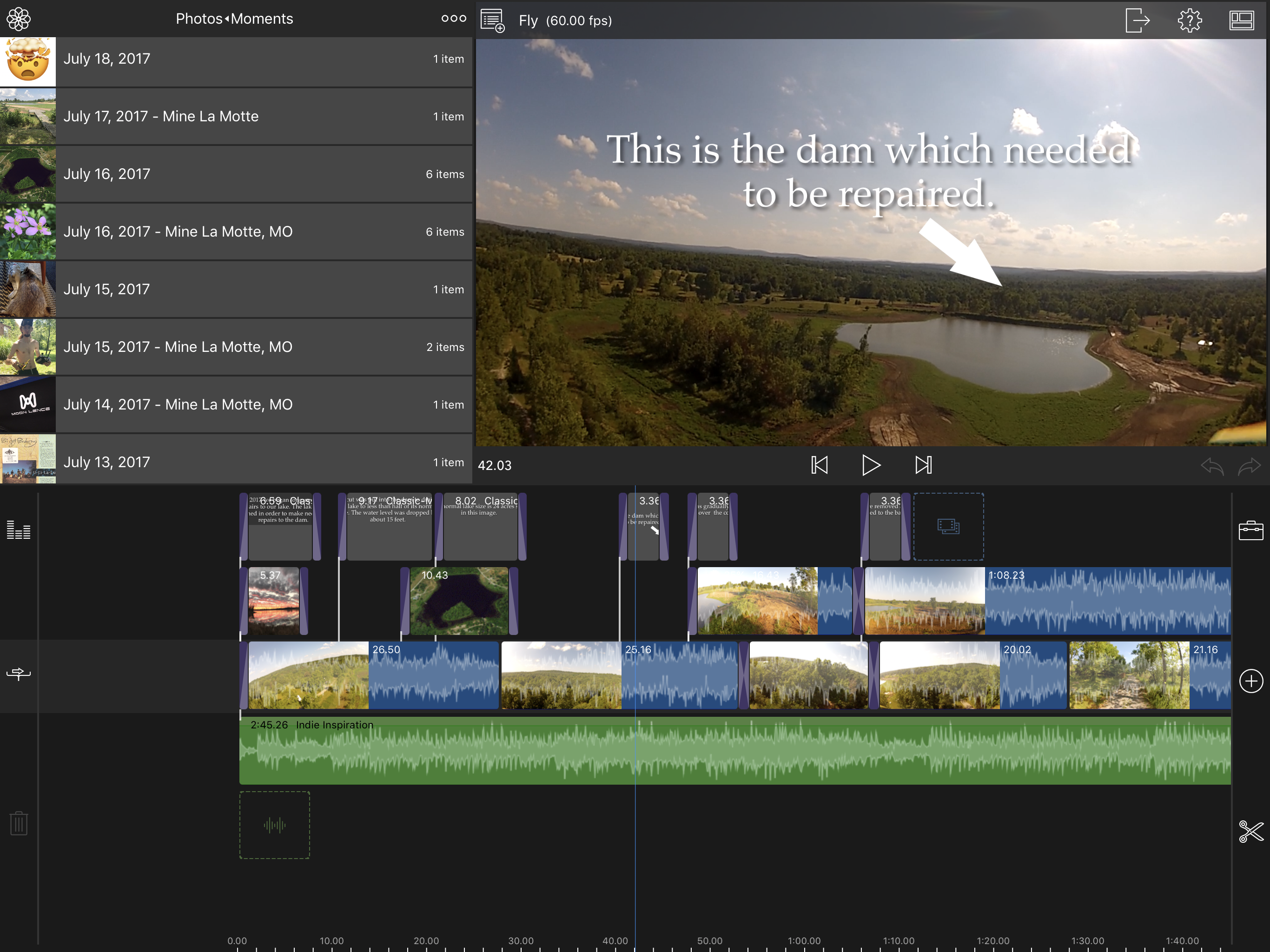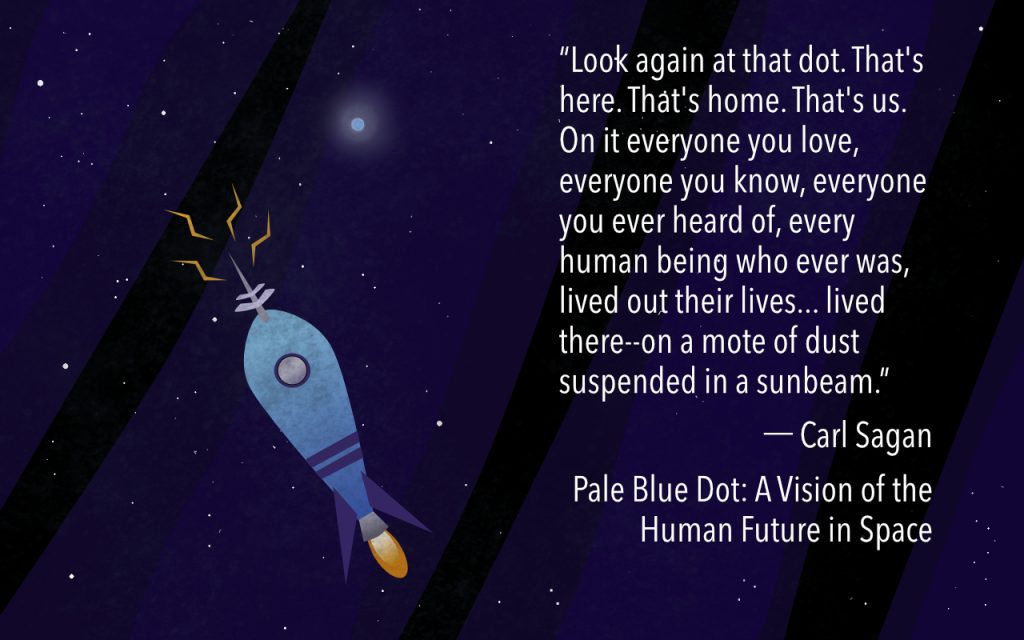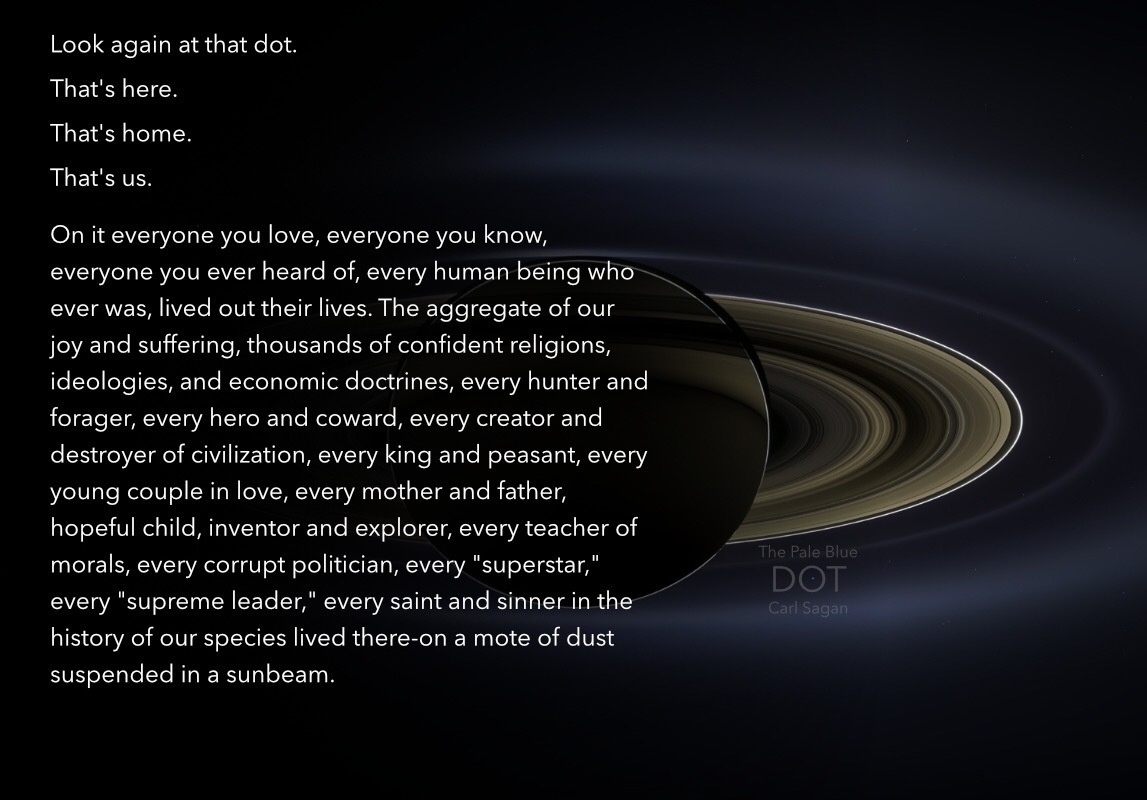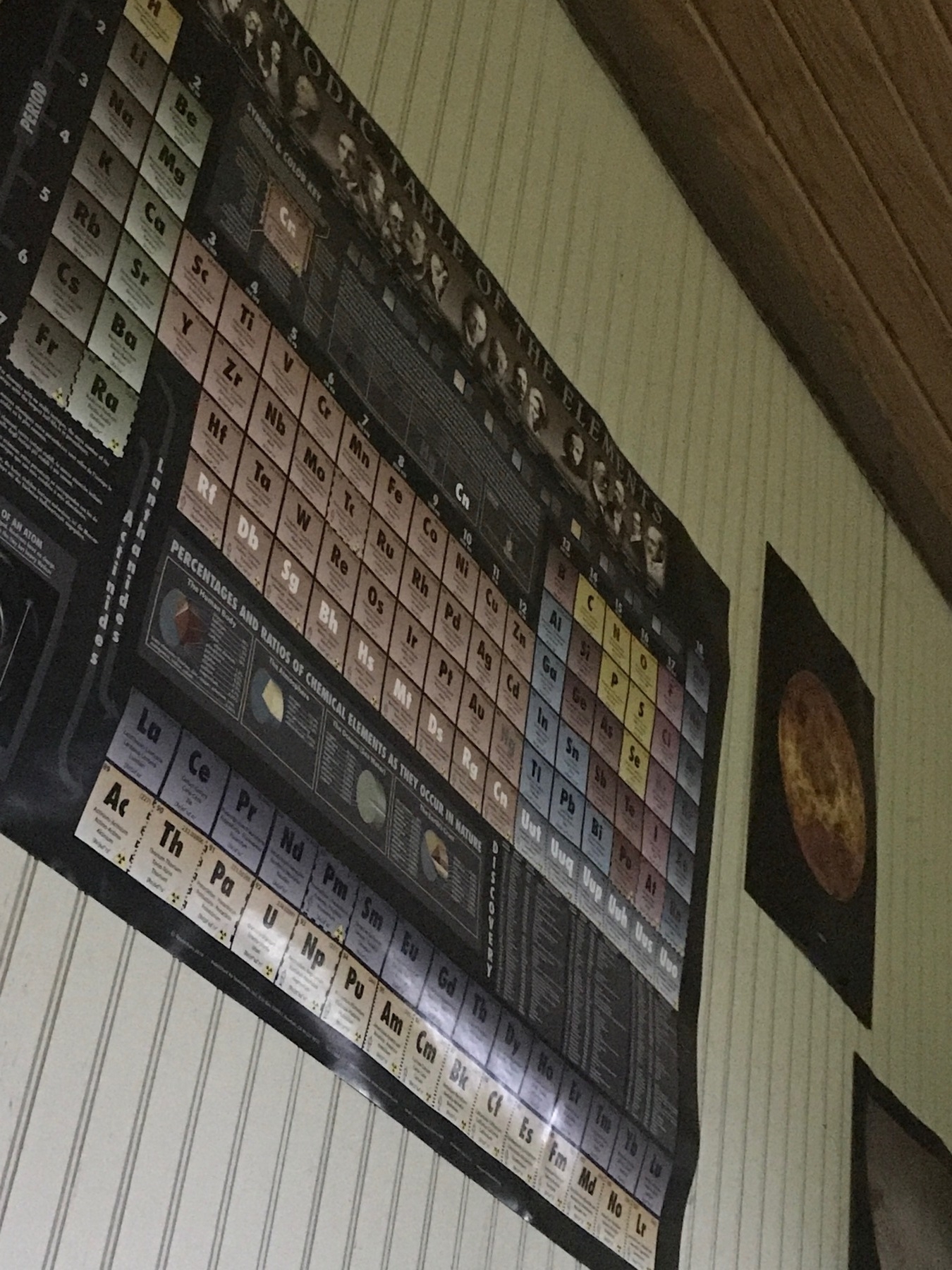How-to iPad with iOS 11
Last week Apple released a series of six iPad and iOS 11 How-To videos. I’ve also discovered, what may or may not be a new section of their website, How to do even more with iPad Pro and iOS 11 which not only has the new videos but also four sections for learning about the iPad:

I don’t spend a lot of time browsing Apple’s website unless I explicitly need information. Browsing around just now, via the above links, I’m impressed. This would be a great place for any iPad user to explore and bookmark. I’m particularly impressed with the iPad Apple Support page.
It’s good to see Apple promoting the device and the new features of iOS 11. I’ve thought for awhile now that Apple was doing too little to promote the features of the iPad and anecdotally this bears out in my observations of usage by the people around me. Very few of them are aware of what iOS and the iPad are capable of. While they get a lot of use out of their iPads it’s mostly a casual use. As has been repeated over and over, the iPad as a casual consumption device. For many that I have observed (my extended family all have them) that is indeed true. That said, it is also true that it is their main computing device. But it’s mostly for messaging, browsing the web, Facebook, email and games. Most of these folks are retired though so it makes sense.
There are plenty of kids in my family that are now in Junior High, High School and college. Most of them in fact. Will they be using iPads as their primary computing devices? With iOS 10 and now 11, they certainly could be. The hardware of the iPad is more than capable. And now with iOS 11, even more so. I’ve been out of the college world for 24 years but I know much of it remains the same. From what I’ve seen the iPad is not only well suited to that job it may well be the perfect device for it. The same goes for many other areas.
After browsing the above pages I doubled back to the Main Apple page and then visited the iPad main section. I wasn’t all that surprised that while the content is, of course, about selling iPads it is heavily weighted towards educating the reader about what the iPad can do. I’ve long thought that Apple needed to do more to demonstrate to the public what the strengths of iOS and the iPad form factor are but I’m beginning to realize that the website does this very well. The stores and staff also do this very well. In-store programs such as Apple Today are exactly what’s needed.
The only area that might still need improvement is television spots. The current ads are great in that they offer up an easy to grasp lesson. I’d like to see more of them in this style. A lot more. Just a simple lesson in using one part of the iPad. Currently the spots just end with large text, “iPad Pro” and I know this is very un-Apple like but I wish they’d include something along the lines of “Learn more at apple.com/ipad/howto”. They’ve developed a very helpful, educational website, why not do more to direct users to it? I don’t have access to broadcast television so I have no idea how often Apple airs ads. It would be great if they’d buy a lot of time each fall to educate users about the new features of iOS.
Voyager at 40
A great thread by @justinhendrix over on Twitter:
The solar eclipse Monday is set to overshadow another significant event for space nerds like me. Tomorrow, August 20th, is a special day.August 20th is the 40th anniversary of the 1977 launch of @NSFVoyager2, the first of two Voyager probes to explore the outer planets.
Its sister probe, Voyager 1, was launched 16 days later. These two probes represent one of humanity’s most extraordinary achievements.
Voyager 1 is nearly 13 billion miles from Earth; it takes a ray of light more than 19 hours to travel from here to its position.
Voyager 2 is nearly 11 billion miles and 16 light hours away. 5 years ago Voyager 1 entered interstellar space, on 25 August 2012.
Incredibly, both spacecraft are still sending scientific information about their surroundings through the Deep Space Network.
In the late 1960s that NASA determined a once-every–176 year alignment would allow a spacecraft to to visit all four outer planets.
Voyager delivered the first single frame photo of the Earth and the Moon together from space. twitter.com/justinhen…
The probes carried radioisotope thermoelectric generators powered by plutonium, and carry an array of scientific instruments. twitter.com/justinhen…
The computers aboard the Voyager probes each have 69.63 kilobytes of memory in total. That’s about enough to store one average .jpg.
The probes used assembly languages such as FORTRAN. Recently the Voyager program hired a new FORTRAN programmer. www.popularmechanics.com/space/a17…–1-voyager–2-retiring-engineer/
The probes visited all the giant outer planets, including Jupiter, Saturn, Uranus and Neptune. They made numerous important discoveries.
For instance, erupting volcanoes on Jupiter’s moon Io, the first evidence of volcanic activity elsewhere in the solar system.
The volcanos on Io were discovered by a JPL Voyager imaging scientist named Linda Moribito Kelly. www.planetary.org/blogs/gue…
Voyager discovered an ocean beneath the icy crust of Jupiter’s moon Europa, waves and fine structure in Saturn’s icy rings, Neptune’s…
Great Dark Spot and 1,600 kilometer-per-hour winds, geysers erupting from the polar cap Neptune’s moon Triton, and eventually…
The termination shock where supersonic solar wind slows down, forming the final frontier of the solar system. ibex.swri.edu/students/…
You can see many of the images that the Voyagers took during their trek through the outer planets here: www.jpl.nasa.gov/voyager/g…
Jupiter. twitter.com/justinhen…
Saturn. twitter.com/justinhen…
Uranus. twitter.com/justinhen…
Neptune. twitter.com/justinhen…
And the famous Pale Blue Dot photo, which inspired Carl Sagan’s speech, which we should all listen to & consider www.youtube.com/watch
The Voyagers also famously carry a Golden Record, which carries the sounds of earth into space- Sagan’s idea. www.npr.org/2017/08/1…
Blind Willie Johnson’s ‘Dark Was the Night, Cold Was the Ground’ is one of the songs now in interstellar space www.youtube.com/watch
The Voyagers represent the best of humanity. The best scientific thinking, engineering, ambition, curiosity, passion, arts and culture.
We’d do well at this moment, 40 years hence, to look at the legacy of these probes, and consider what we can learn from their journey.
It’s more than the sum of their scientific discoveries. They explore the universe, but they also tell us something about ourselves.
Our best selves. Voyager is the best of humanity. We need to remember the aspiration to be our best selves, to advance the species.
So enjoy the eclipse, but spare a moment tomorrow at 10:29 AM Eastern to remember the launch of @NSFVoyager2, a great human achievement.
Here is an excellent hour on the history of Voyager from the BBC. h/t @acinonnap www.bbc.co.uk/programme…
Understanding the eclipse by creating a to-scale demonstration of orbits and moon phases
I was recently asked to do a presentation about the upcoming solar eclipse at our library as I am one of a small local group of amateur astronomers. I happily accepted. I always enjoy putting together Keynote presentations for such events. I spent several days last week assembling the 38 slide presentation and did the presentation last night. It seemed to go well. For one part of the presentation I used three volunteers to serve as the sun, moon, and Earth. The idea was to illustrate the phases of the moon as well as the angle of the moon’s orbit with these three people and in truth, after a bit of initial confusion, I think it went pretty well. But it wasn’t to scale as we were crowded into a fairly small room at the library. After the event I got to thinking about how that sort of presentation, in particular the bit involving the volunteers, could be expanded into something really fun but in an outside location so that a sense of scale could be created. It would involve a bit of math so I thought it might be fun to recruit Siri as my helper in preparing this activity.
The idea would be to create a scale model of the Earth in relation to the sun and moon based on a circle of 365 feet in circumference. Each foot represented one day in the Earth’s orbit around the sun. Now, at this scale, I wanted to properly represent the position the sun at the center of our orbit. I needed the radius of my circle. Okay. I asked Siri to calculate the radius of a circle with a circumference of 365 feet. I was given a WolframAlpha calculation screen as a result: 58.1 feet. But I wondered if I could copy/paste the content. It had never occurred to me to tap the WolframAlpha icon, just a bit of text in a square in the corner of that display of results. I’ve done this kind of thing many times but never thought to see what would happen if I tapped. I expected it would do nothing. Instead, it took me to the AppStore for the WolframAlpha app. It never occurred to me that there was such an app but of course there is! I downloaded it and it opened my results into the app. It’s a very nice app that allows further input and new calculations among many other things. But no option to copy/paste the content.
Now, back to working out the activity. I’ll need to get some string but before that, I now know that if my orbit is scaled to 365, feet my radius is 58.1 feet. So, I’ll position my sun with a pole with string tied to it. From there I’ll walk out 58.1 feet and place another pole. I’ll have two strings. One which I’ll keep tied to the center pole (my sun) and which will guide my “orbit”. The second string will be tied to the second pole. Now it’s just a matter of walking the circle around the sun and dropping my string to represent the 365 feet of orbit. The next step is to convert a few other distances. For this I hopped over to this solar system scale model calculator.
Next, I used Siri to do a bit of math. First I asked her for the average circumference of the Earth’s orbit. Then I asked her to convert this from miles into feet. Then I divided that by 365 come up with my model scale of 8,447,618,973. With that number input into the solar system scale calculator I confirmed my Earth orbit radius of 58.1 in the results. Next, I wanted to get the moon’s orbit as well as the size of my three solar system objects at this scale. I made sure to select the Moons option and on the form and I got an orbit radius for the moon of 1.79 inches. TINY!! With that radius the average circumference of the lunar orbit is just 11.25 inches. Whats’ the size of the sun, Earth and moon at this scale? According to this same calculator, at this scale the sun is just 6.49 inches in diameter. Of course, the Earth and moon are very tiny! The Earth is just .06 inches in diameter and the moon is .016. Just a spec.
So, I’ve got the scale though in truth it might be best done at a slightly larger scale given how tiny the Earth and moon are in this model. Regardless of the ultimate scale of the model it is fun to play with and I expect it will be a fun model to explore in the yard. The idea would be to set the scale and then discuss the movement of the moon in it’s orbit of the Earth and the Earth’s orbit around the sun. By positioning volunteers it becomes a bit more obvious why a new moon is invisible to us. By adjusting the position of the volunteer “moon” in orbit around the volunteer “Earth” it become easier to understand how the moon gradually becomes more visible as a crescent then a quarter then a full moon and so on. Further discussion of the 5° elevation of the moon off of the ecliptic helps participants further understand why we do not have solar eclipses with every new moon.
Subscriptions_Lovejoy
Ben LoveJoy over at 9to5Mac has written a very good summary of the app subscription hooha that has popped up over the past week, largely as a result of the subscription model being adopted by the folks that make Ulysses. Here’s his conclusion which I agree with.
I can’t help feeling that the whole subscription model is at some point going to implode. Some people will simply refuse to get on board at all – like those who say they are done with Ulysses – while others will eventually reach breaking point. One or two low-cost subscription apps, well, ok, maybe. But what happens when it’s ten? Twenty? At some point, people are going to say enough is enough.
iPad Journal Video Editing
Back around 2002 I spent a bit of time editing video using a couple of G4 Macs with Final Cut Pro. A series of experimental shorts as well as a full length documentary. Previous to that I’d also used iMovie and since then I’ve mostly used iMovie on Macs and then in the iPad and even the iPhone.
First, the experience of editing on a G4 Mac with iMovie was magical. I’d never done such a thing before. But it was also a process that involved external hard drives and various cables. My Mac’s internal drive did not have the capacity to handle larger projects so those had to be offloaded to external drives in the range of 40 to 80GB. Importing meant attaching a digital camcorder with FireWire and importing the data as the camcorder played the footage. Which meant a lot of time working with a camcorder attached to the computer. Once footage was imported then it was a matter of working with the clips. Arranging them on the timeline, splitting, trimming, etc.
Then there was the rendering. Oh, yes that. Adding transitions, adding captions or titles, could require a few seconds to a few minutes depending on the Mac and the work being done. Then at the end of the project there was the rendering out to a final product. It might be digital or it might be back out to tape. This often took hours for larger projects. Even our top of the line G4 Power Mac could take hours. When I worked on my G4 PowerBook it took even longer. It was the sort of thing you didn’t have to do often but when you did it was best left to do overnight. Come back in the morning and hope there were no errors. Also, as I recall, we didn’t use them much while rendering. All the memory and processor power was consumed by the task at hand. For some context, these Macs. As I recall it had something like a 867 MHZ processor and 512 MB of RAM. I’m pretty sure we upgraded to a gig of RAM. The internal hard drive was, I think, 60 GB hence the need to use externals. That set-up was $2500 not counting the external drives that were roughly $200 as I recall. Plus the cost of FCP.
So, in 2002, that was our “Pro” machine that we used to get our work done. Video editing with Final Cut, effects with Adobe After Affects, Photoshop for photos, etc. Out of a small office our little digital arts co-op with 3 desktop Macs and several laptops produced several films that were shown at several film festivals. At least a couple of those filmmakers are still at it today. I was mostly in it for the fun and for the learning. Filmmaking has never been a passion so much as just something I like to tinker with.
Jump forward to 2017. Over the past couple of years I’ve edited several for-fun projects in iMovie on the Mac, iPad Air 2, iPhones, and and now the most recent iPad Pro. Of course the Mac handles it all very well, but I want to focus on iOS devices. The iPhone 6s and iPad also have no problems running iMovie though with the 64 GB storage I had to be careful with stored video. But in terms of processor and memory, iMovie ran very well. Importing is instant if you’re using video recorded on the device. AirDropping clips from an iPhone takes seconds to minutes depending on the size of the clips. Then just import from the Photos library, so, again, it’s instant. Of course, there is no rendering of transitions or captions anymore. Just place them in the timeline and it is instant. Same thing for color filter affects. It’s instant. Editing timeline is a matter of splitting clips, changing length of clips, etc. It’s all pretty basic but it is the essentials and is all instant. Multiple layers of video are not possible. In summary, it’s simple but incredibly fast and smooth. The only time I’ve ever had to wait is in the export process which applies to both Mac and iOS devices. But this isn’t something that takes long and while I’m doing it I can open up apps in slideover (iMovie doesn’t do split screen) and carry on with no lag at all.
This brings me to LumaFusion. Every couple of years I do a little family oriented documentary. In the recent past they have usually been focused on older family members such as grandparents. I wanted to record some of their stories so we would could enjoy them into the future and pass them on to great grandkids. As my parents get older I thought it was about time to get started on their videos and also I have aunts and uncles that I would like to do videos for. So, I decided to splurge on LumaFusion and I’m really glad I did.
I’ve got two active projects going at the moment. About two hours worth of editing time. Enough to begin to form an opinion which is this: LumaFusion is a fantastic tool for anyone that wants or needs to do video editing on an iPad. It’s far more powerful than iMovie. I’ve not used Final Cut Pro since around 2005 so I can’t say how similar it is compared to the current version but I can say that it reminds me of what it was like to use FCP and I’ve heard others say the same. Essentially, it is the closest thing we currently have to FCP on an iPad. It offers up to three layers/tracks of audio and video which was the most obvious feature I considered. Of course, it is far more powerful than iMovie and there are many other features that could be discussed but that’s all on the website. I won’t repeat it here. I will just say that the app is exactly what i was hoping for and works as advertised. 9To5Mac had a great review.
Until Apple offers up FCP for iOS this is the app to use for more advanced video editing. The two projects I’ll be working on over the next couple of months are likely to each be in the 60 to 90 minute range so I expect to have a much better idea of the strengths and limitations of LumaFusion when I’ve gotten to the other side. Based on the time I’ve already spent with it I do feel comfortable in my expectation that this app, combined with the iPad Pro, will serve as a very powerful video editing combination. By comparison to the “pro” Power Mac, my current iPad cost less than half and is portable in a way that that desktop could never be. Furthermore, my iPad actually contains a video camera that is far better than the one I used back then. Or, if preferred, I can use the slightly better camera found in my iPhone 7Plus. My point is that what we call “pro” is always relative. What “professionals” might use at different times for different tasks will vary.
I’m really looking forward to giving this a whirl and will, no doubt, report back on the experience!
Star Trek Voyager
I’ve just gotten around, after many years of delay, to Star Trek Voyager and I’m so glad I did. I’m into season two and it’s fantastic. Highly recommended!
With the recent events in Charlottesville, Virginia and Trump’s predictable lack of condemnation, which is to say, support for, white supremacy, I can’t help but believe that America is now entering a new depth of crisis.
This could get very bad.
Pale Blue Dot
With all of the craziness of the past couple of days (and really, the months since DT took office) it’s good to get some perspective with Carl Sagan.
The original image was taken in 1990 at Sagan’s request. I used the new image taken July 19, 2013 by the Cassini spacecraft in an event called “The Day the Earth Smiled”. Look closely at DOT and you’ll find the Earth at the center.
Story behind original image taken in 1990 at Penny4Nasa.
What a strange world we live in. The beauty of the non-human world constantly amazes me. Humans though, always a mix of beauty and horror.
Back to Byword
Getting Byword set-up again for blogging. Haven’t used this app in over a year and I think I’ll settle back in just fine. As comfortable as I was with Ulysses, the interface between the two is not all that different.
Just Breath
The world is all upside down these days. It’s a good time for deep breaths and time under the stars. Last night I spent a good long while looking at Saturn and a few of it’s moons. Then I spent some time looking at the Lagoon Nebula.
[gallery size=full columns=1]
A presentation for our local library. We’re getting closer to the eclipse!
So long Ulysses
Well. Darn it. Count me among those that enjoy Ulysses but will not subscribe. I’ve used it for a year and it’s a great app. The best feature, in my scenario, is posting to Wordpress. I’m happy to pay well for apps like Ulysses and pay for updates as needed. But I’m not willing to pay for a subscription. I can’t afford to subscribe to every app I use. If it is essential for what I do, maybe. But even then I’m not happy about it. But for a text editor? No. There are too many other options. The one feature of easier blog posting is not enough to keep me around.
I may continue to use the current version till it no longer works but I’ll likely look into other options and probably begin the transition to something else. I suspect it will feel strange to invest further documents into an app that no longer has a long-term future on my devices. In fact, it only took me the time to write those two sentences to decide that I would begin phasing out my use of Ulysses this very moment. The problem is that every document in Ulysses is held in a monolithic database. Compare that to an app like Byword or Editorial, both of which store documents as individual text documents in their app folder on iCloud or Dropbox, respectively.
So, as of this moment, I’m giving up the benefits I found in using Ulysses and switching. I’ll revisit both Byword and Editorial for now. Also, there have been quite a few updates to the official WordPress app. I’ll give that another look for the actual mechanics of blog posting.
A final brief but blunt note about app subscriptions: NO. Your app is not a magazine or a music or video service. It’s an app. It is a thing that I want to own, not a service I want to rent. There’s a time and a place for subscriptions but apps is not one of them. At least, not for me. Let me pay a fair price for an app. Offer paid updates as needed. But I want to own it. I don’t want to be locked into paying for it again and again. Not for a dollar or $2 or $5.
Sigh.
What the iPad Pro is capable of
The Matter of High-End iPad Growth
Nigel Warren (via Michael Tsai):
The iPad’s average selling price can be seen as an indication of whether the iPad has the potential to continue evolving into a more capable tool. If sales of the Pro line are weak, it’s a sign that Apple hasn’t succeeded in creating useful functionality that takes advantage of improved hardware. And if users don’t need improved hardware, Apple’s business model can’t justify continued iPad software development long term.Nick Heer at Pixel Envy chimes in:
It has been remarkable over the past several years to watch the iPad’s skyrocketing performance potential, but it has been infuriating to see a lack of comparable software improvements. iOS 11 will help turn that corner, but I feel a lot of work remains to make the power of the iPad feel like it’s being put to use.Yes, iOS 11 and then apps like Affinity Photo and soon, Affinity Designer. Also, the excellent multi-track video editing app, LumaFusion Pro. These apps are exactly the kinds of apps that push the hardware of the iPad Pro. There are, of course, other "pro" apps such as Panic's Coda and Transmit that are used for professional purposes but which do not push the hardware in the same way. The point is though that these apps exist. Now. If anything, it might be said that what is increasingly needed is for Apple to really push the marketing of the iPad. All of them.
Regardless, I don’t think I’d call the state of iOS or available apps “infuriating”. There are things in our world for which that kind of emotion is warranted but it isn’t this.
Revisiting Space Exploration with Affinity Photo for iPad
In June of 2015 Affinity Designer for Mac caused a splash when it was released. I’d never heard of it but was anxious to try something that might allow me to replace Illustrator. I spent a couple weeks with the trial and decided pretty quickly that I would be purchasing it. During that time I created a series of space-themed posters and shared them is a couple of blog posts: post one and post two.
Of course, Designer is primarily for creating vector-based art. But just as Affinity Photo on Mac is very capable of doing vector work so too is the iPad version. I thought it would be fun to revisit with a new space exploration themed image again using a Carl Sagan Quote.

The quote in its entirety:
“Look again at that dot. That’s here. That’s home. That’s us. On it everyone you love, everyone you know, everyone you ever heard of, every human being who ever was, lived out their lives. The aggregate of our joy and suffering, thousands of confident religions, ideologies, and economic doctrines, every hunter and forager, every hero and coward, every creator and destroyer of civilization, every king and peasant, every young couple in love, every mother and father, hopeful child, inventor and explorer, every teacher of morals, every corrupt politician, every “superstar,” every “supreme leader,” every saint and sinner in the history of our species lived there-on a mote of dust suspended in a sunbeam.” - Carl Sagan






